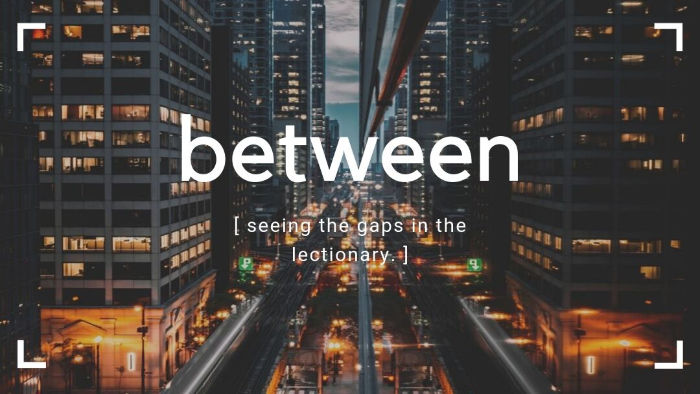
A look at the gaps in the lectionary.
This week: the gap between Epiphany LastB, Ash Wednesday, and Lent 1B
The texts: varies (Mark 9:2-9, Matthew 6:1-6,16-21, Mark 1:9-15)
The gap between the end of Epiphany and Lent runs through Ash Wednesday. It is also a massive break from the narrative style of ordinary time and into the thematic story of the season(s): first Lent and then Easter.
What we encounter in the season after the Epiphany we might call the introduction to discipleship. While the season’s hallmark is revelation—epiphanies and revealed truths—what that translates into our lives as is response.
How do we respond to the goodness of God?
The shift into Matthew
It is quite smooth, considering. The themes of the day are clean and our relationship to them is quite familiar.
The context for Ash Wednesday is valuable, if strangely off-putting to the somber, dour-faced crowd. The ones coming to Ash Wednesday to get penitential and prove their sincerity.
For we receive this message of giving in secret and hiding our generosity as a special badge of honor. One that certainly reflects the interior greatness and the holy esteem we seek.
The context for this passage, however, says much the opposite, unfortunately.
This passage comes from the middle of the Sermon on the Mount. Which means a passage famously suggesting we do generous things in secret follows a passage about public shaming the powerful.
It isn’t that these two are in conflict so much as our attitudes toward the personal and the private often hold these actions in tension. Generous giving in secret is thought of as an act of humility—while publicly shaming someone else’s piety is anything but.
We should let this modern tension speak to us. Especially as we begin this holy season of Lent with an eye toward personal learning and common need.
We can easily examples of other people’s hypocrisy. And scarcely address our own. We know that. But hypocrisy itself isn’t the crime. The crime is in the way we treat other people. And the hypocrisy is how we know that they (or we) can’t see it.
Back to Mark
With the first Sunday of Lent, we return to Mark. Specifically to the passage we skipped over at the beginning of the season after the Epiphany.
And as I described in a previous Between, that passage—the temptation in the Wilderness—is an important part of the story arc. Even if it is just a couple of verses.
Each year, we get the Temptation story from one of the Synoptic gospels. We probably prefer the other years when we read from Matthew or Luke—there is way more action. But Mark’s version is colorful and evocative.
And because of the story’s shortness, the lectionary actually does us a favor by sharing with us some of the context. It immediately follows the baptism; appearing to crystalizing Jesus’s call story.
It also immediately precedes the calling of disciples and the first healing ministry.
As hearers of the word in church, we are receiving this after all of that. Which makes it a kind of random encounter with Satan in the practical imagination—rather than one yoked to baptism.
The gospel writers all connect it with Jesus’s baptism. It isn’t a story isolated from the event—but it evokes the trials of following this Way of Love God has called us into. A way that involves walking through temptation—a time of trial. It is inescapable and inevitable.
And it is what we’ve signed up for.
This season, we’re walking the Way of Love with intention and purpose. Understanding that temptation abounds and is not something to be avoided. And with Ash Wednesday in mind, we also remember it is something we all experience—and can, if we work toward it, share in together.
